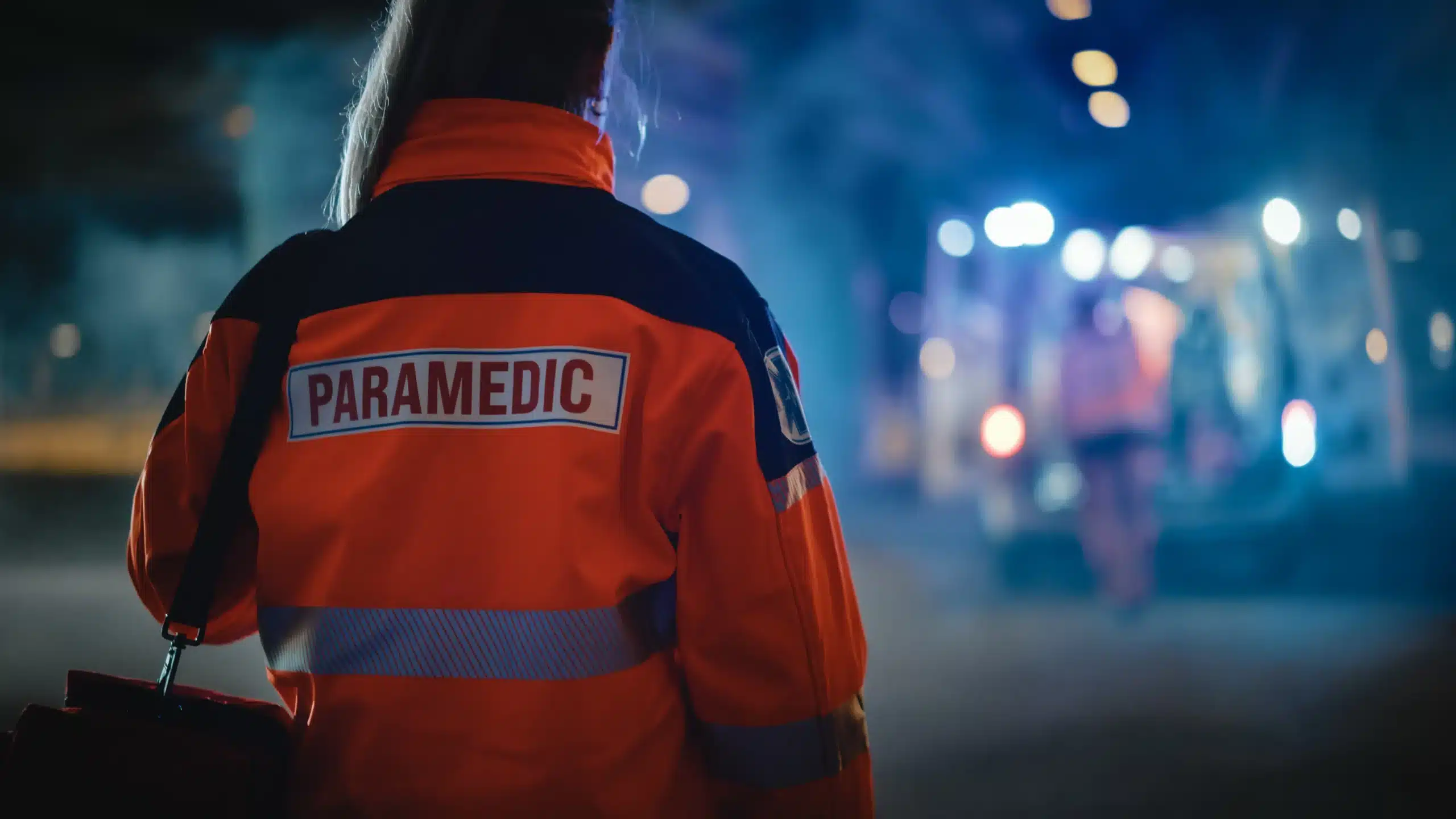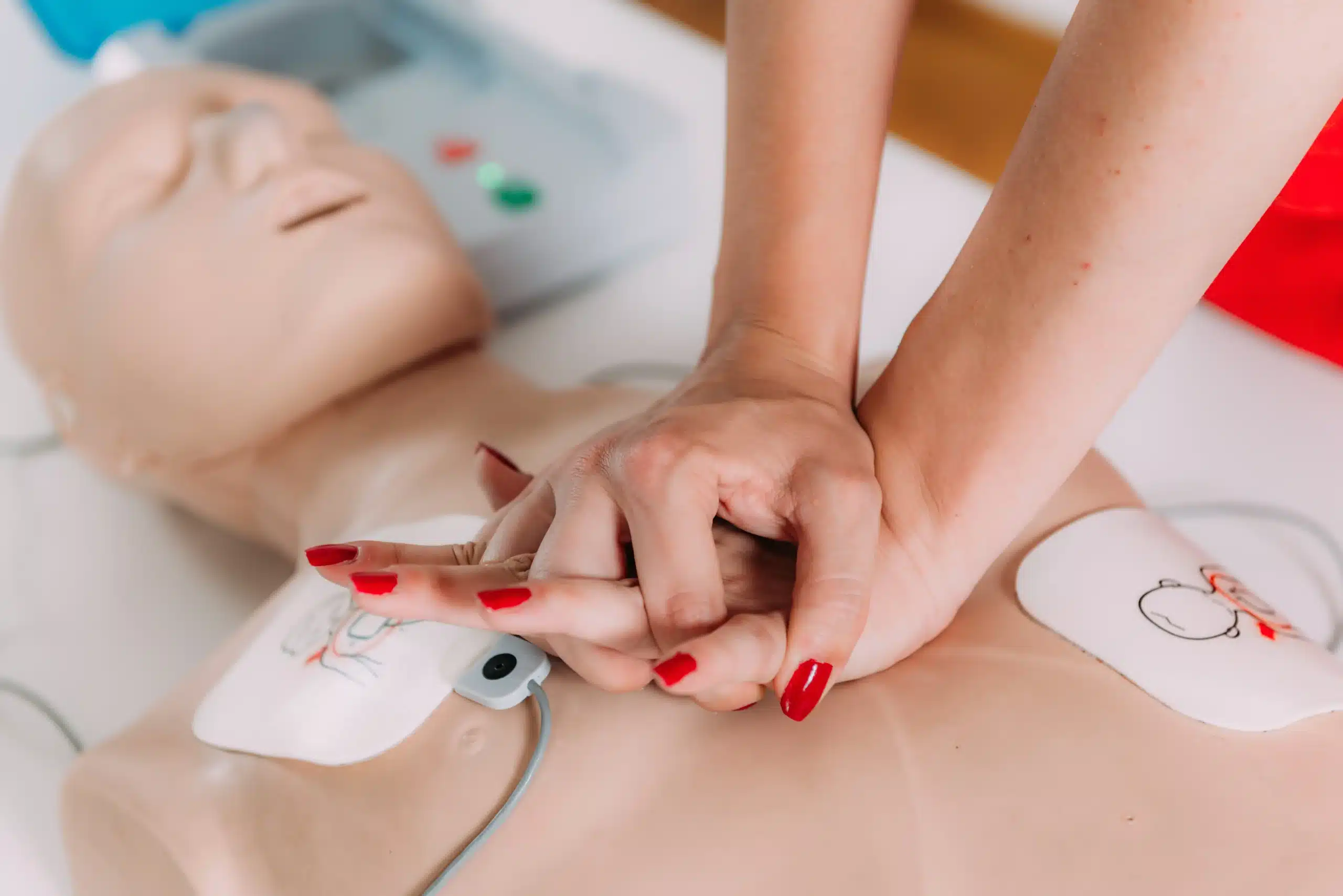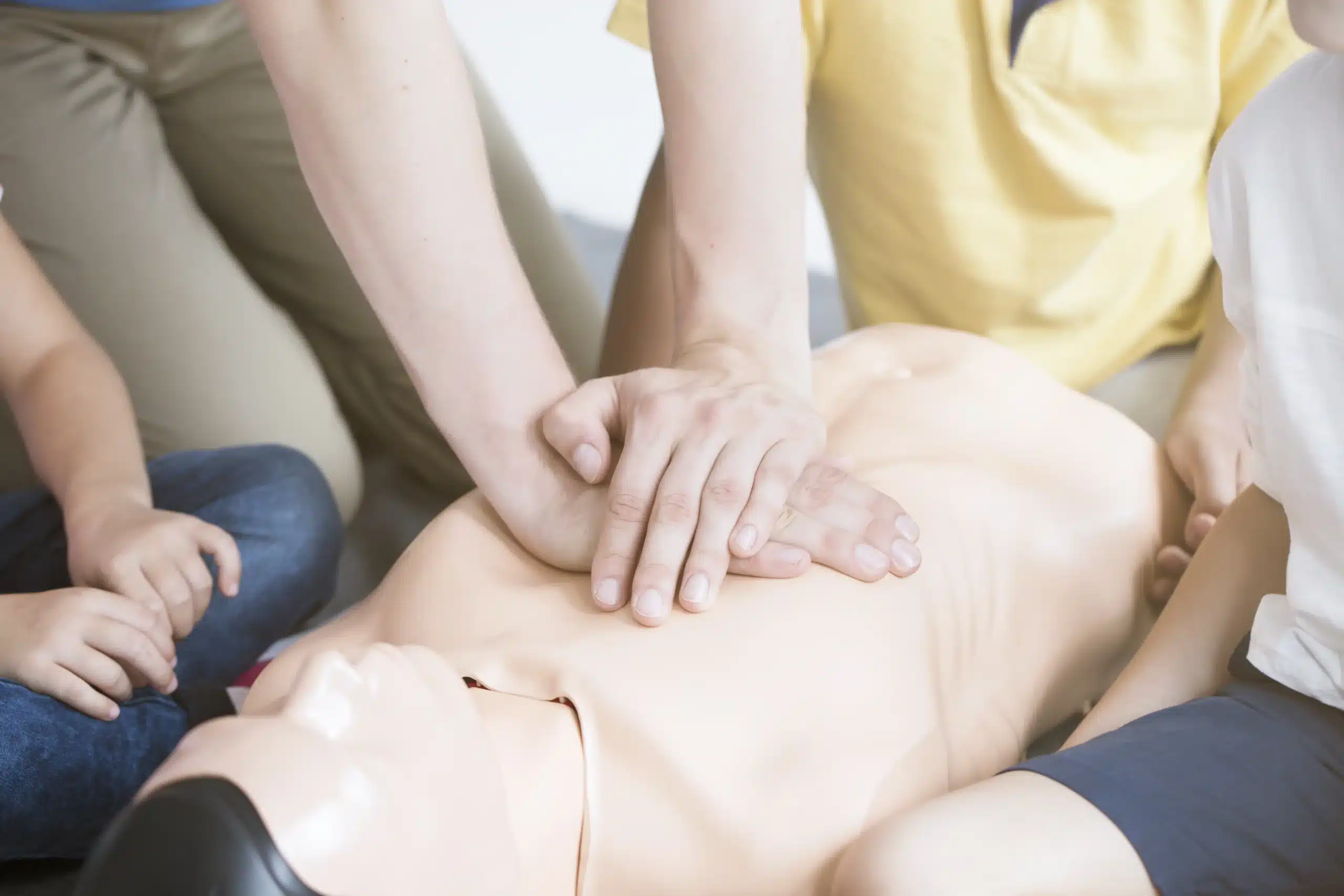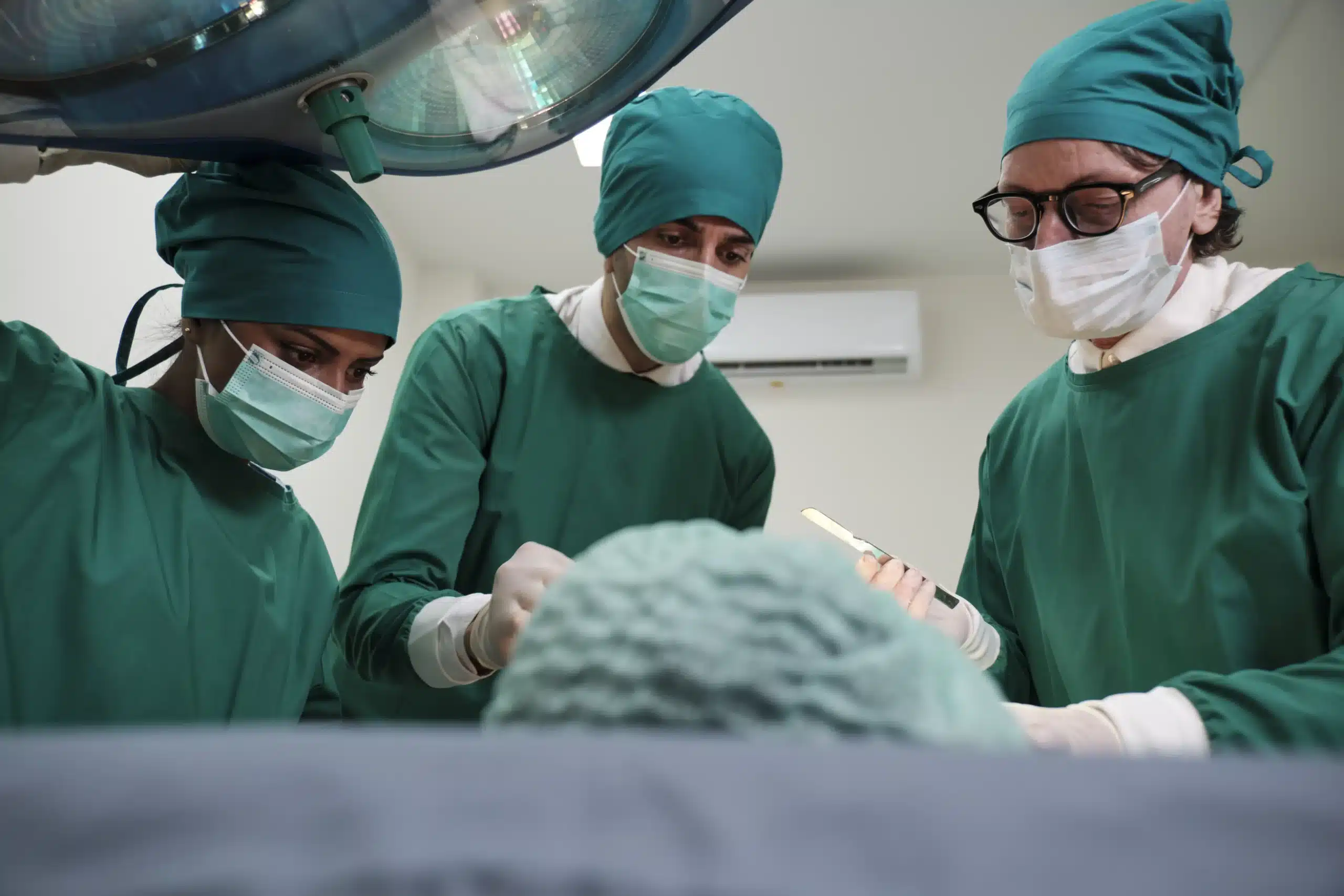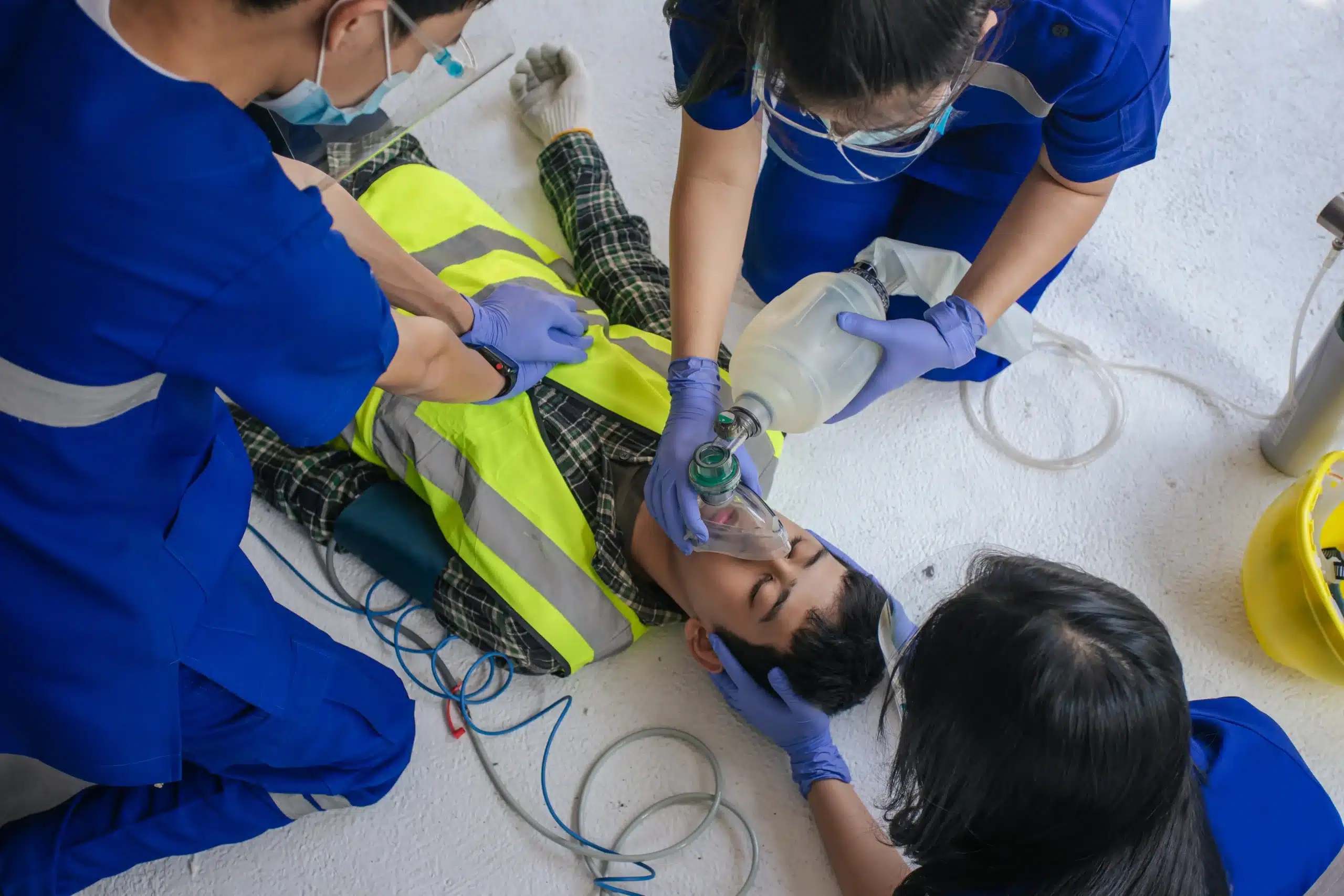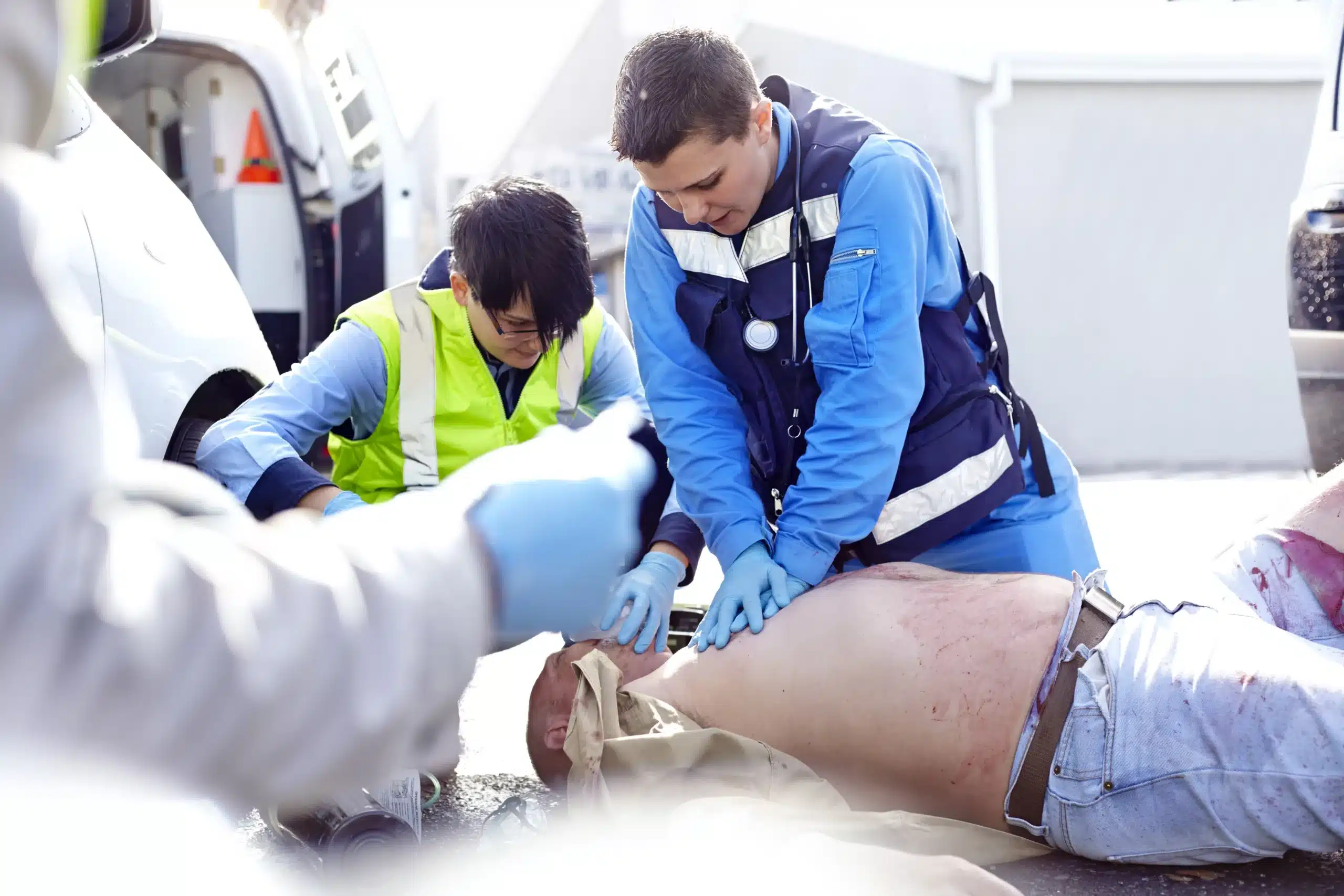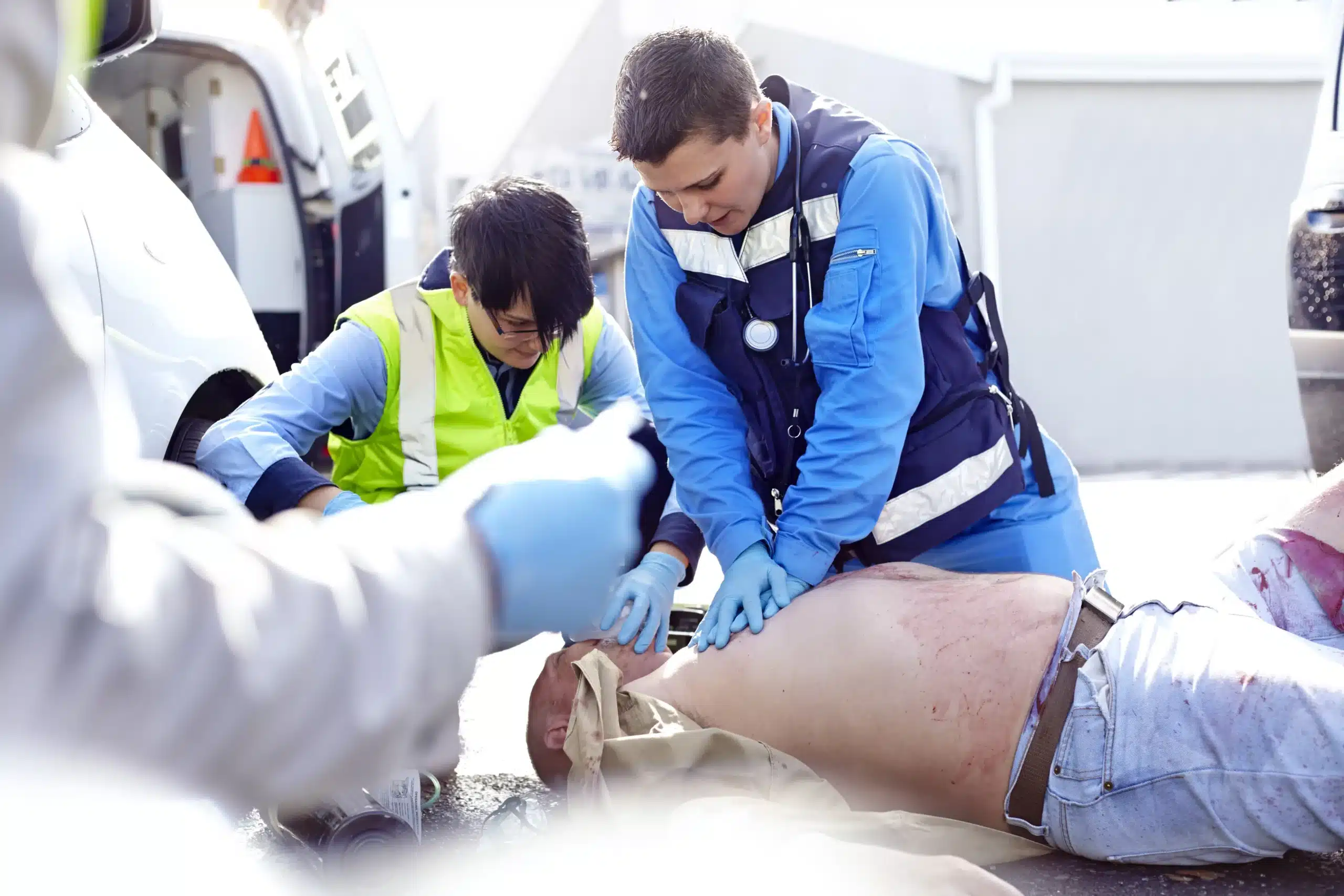In the realm of childcare, preparation isn’t just about having snacks and activities planned; it’s about being equipped to handle the unexpected. Pediatric CPR and first-aid training in Union City provides that essential preparedness, giving parents, caregivers, and childcare professionals the skills to respond confidently in medical emergencies. This training covers a range of life-saving techniques, from performing CPR on infants and children to managing choking incidents and treating common childhood injuries. This article delves into the world of pediatric CPR and first-aid training in Union City, exploring the key skills taught, the process of evaluating training providers, and the profound impact this training can have on your ability to protect the children you care for.
Key Takeaways
- Be prepared for pediatric emergencies. Pediatric CPR and first-aid training provides essential skills to handle situations like choking, injuries, and breathing difficulties, giving you the confidence to act quickly and effectively.
- Choose your training wisely. Look for reputable providers offering American Heart Association certification and experienced instructors. Consider factors like class format (in-person or blended learning), location, and cost to find the best fit for your needs.
- Create a safer environment for kids. This training empowers you to identify potential hazards, respond confidently to accidents, and promote a culture of safety for the children in your care, giving you and their families valuable peace of mind.
What is Pediatric CPR?
Knowing how to respond to a medical emergency involving a child is a powerful skill. Pediatric CPR and First-Aid training gives parents, caregivers, and childcare providers the knowledge to handle such situations. Let’s explore what pediatric CPR involves and why it’s so crucial.
What is it?
Pediatric CPR and First-Aid training covers life-saving techniques for infants and children. These courses teach essential skills, from performing CPR and managing choking to treating common injuries like burns and fractures. It’s a comprehensive approach to ensuring you’re prepared for a range of pediatric emergencies. For more information check out our CPR classes.
Why is it important?
Children don’t react to medical emergencies the same way adults do. Their smaller bodies and developing respiratory systems require a different approach. Knowing how to respond quickly and effectively can make all the difference. Pediatric first-aid training empowers you to act confidently and potentially save a life.
Key differences between adult and pediatric CPR
Pediatric CPR isn’t a scaled-down version of adult CPR. It involves specific adaptations for infants and children, including variations in chest compressions, rescue breathing, and the use of ventilation devices. Understanding these critical differences is at the heart of effective pediatric CPR. Contact us today to learn more about our CPR and First Aid classes.
Top Pediatric CPR and First-Aid Training Providers in Union City
Finding the right pediatric CPR and first-aid training is crucial for anyone caring for children. Union City offers several excellent options, each with its own strengths. Let’s take a closer look at some of the leading providers in the area:
Hayward CPR Classes
Hayward CPR Classes offers a comprehensive range of certifications, from basic first aid and CPR training to specialized courses like pediatric CPR and AED use. They focus on providing practical skills and building confidence for emergency situations. They also offer group discounts, making them a cost-effective choice for organizations. Learn more about their BLS certification.
American Red Cross
The American Red Cross is a well-known and respected provider of first aid and CPR training. Their Adult and Pediatric First Aid/CPR/AED course covers a wide range of emergencies involving adults, children, and infants. The Red Cross provides a nationally recognized certification, valuable for various professional fields.
CPR Education
CPR Education serves Hayward and the surrounding areas, including Union City. They aim to provide high-quality training and resources to empower residents to save lives. Find their CPR classes and first-aid training information on their website.
In-Home CPR
In-Home CPR offers the convenience of training at your location, whether it’s your home or business in Union City. They provide certification through various organizations, including the American Heart Association, ASHI, and the Red Cross. They also offer pediatric-focused classes designed for new and expecting parents.
Local hospitals and medical centers
Many local hospitals and medical centers in and around Union City offer pediatric CPR and first-aid training courses. These courses often cater to healthcare professionals but may also be open to the public. Check with hospitals like Stanford Health Care – ValleyCare and Washington Hospital Healthcare System for their course offerings. These classes can provide valuable hands-on experience and access to expert instructors. For additional local training options, explore resources like Adams Safety Training.
Essential Skills Taught in Pediatric CPR & First-Aid Courses
Knowing how to respond to a medical emergency involving a child can be life-saving. Pediatric CPR and first-aid courses equip parents, caregivers, and professionals with the essential skills to handle such situations effectively. These courses cover a range of critical skills, giving you the confidence to act quickly and provide appropriate care.
Recognize pediatric emergencies
Pediatric emergencies can range from breathing difficulties and allergic reactions to seizures and injuries. Learning to recognize the signs and symptoms of these emergencies is the first crucial step. Pediatric first-aid training teaches you how to quickly assess a child’s condition and determine the appropriate course of action. This rapid assessment can make all the difference in a critical situation. For more information, check out resources on pediatric emergencies.
Perform CPR on infants and children
CPR for infants and children differs from adult CPR due to their smaller size and developing physiology. Pediatric CPR techniques involve modified chest compressions, rescue breaths, and, if available, the use of ventilation devices. These courses offer hands-on practice, allowing you to develop the muscle memory and confidence needed to perform CPR effectively in a real emergency. Learn more about these techniques to be prepared.
Handle choking incidents
Choking is a common hazard for young children. Pediatric first-aid and CPR courses teach you how to recognize the signs of choking and perform appropriate techniques to dislodge the obstruction. These techniques vary depending on the child’s age and level of consciousness, making proper training essential for safe and effective intervention. The American Heart Association offers Heartsaver Pediatric training to help you prepare for these situations.
Treat common childhood injuries
Childhood is a time of exploration, and minor injuries are inevitable. From cuts and scrapes to burns and fractures, pediatric first-aid courses cover the treatment of common childhood injuries. You’ll learn how to clean and dress wounds, apply splints, and manage pain effectively. These skills can help prevent infection and promote faster healing. Explore additional resources on treating common injuries.
Use an AED on children
Automated external defibrillators (AEDs) can be life-saving in cases of sudden cardiac arrest. Pediatric first-aid courses often include training on how to safely use an AED on a child. While AEDs are designed to be user-friendly, understanding the specific protocols for pediatric use is crucial for optimal outcomes. These courses provide the knowledge and practice you need to confidently and effectively use an AED if the need arises. The American Heart Association offers an online Heartsaver Pediatric First Aid CPR AED course.
Evaluating Training Provider Qualifications & Certifications
Before signing up for a pediatric CPR and first-aid class, take some time to evaluate potential training providers. Confirming a provider’s qualifications and certifications ensures you receive high-quality, recognized training. Here’s what to look for:
American Heart Association Certification
The American Heart Association (AHA) sets the standard for CPR and first-aid training. Choosing an AHA-certified course, whether it’s CPR, BLS, ACLS, or PALS, ensures you’re learning evidence-based techniques. This is especially important for healthcare providers, who often require AHA certification. Hayward CPR Classes offers a range of AHA-certified courses, including BLS and ACLS. For those needing more advanced training, consider looking into our RQI classes. For a great value, check out our group discounts.
Instructor Credentials and Experience
Look for courses taught by experienced professionals. Instructors should ideally have backgrounds as EMTs, RNs, or paramedics. Their real-world experience adds a valuable layer to the training, allowing them to share practical insights and answer your questions effectively. In-Home CPR highlights its instructors’ professional backgrounds, giving potential students confidence in the quality of instruction.
State Compliance and Regulations
Depending on your profession, you might need a certification that meets specific regulatory requirements. Some workplaces require OSHA-compliant training. Check with your employer or licensing board to understand any necessary certifications. The American Red Cross clearly states whether its courses meet OSHA requirements, making it easier to find compliant training.
Ongoing Education and Recertification Requirements
CPR and first-aid certifications typically expire after a certain period, often two years. Find out a training center’s recertification process and how they can help you maintain your credentials. Knowing this upfront simplifies staying current on your training. The American Red Cross provides information on the two-year validity of its Adult and Pediatric First Aid/CPR/AED certification, allowing students to plan for recertification. If you have questions about our recertification process, please contact us.
Scheduling & Costs
Finding the right pediatric CPR and first-aid class often comes down to logistics. Understanding class formats, scheduling options, and costs will help you make an informed decision.
Class availability and formats
Pediatric CPR and first-aid training courses are typically offered in several formats. In-person classes provide hands-on practice and direct interaction with instructors. Blended learning options combine online modules with in-person skills sessions, offering flexibility for busy schedules. When choosing a format, consider your learning style and how much time you can commit to in-person instruction. Many providers, including Hayward CPR Classes, offer various CPR and first-aid certifications, from basic to specialized certifications like pediatric CPR and AED use.
Group vs. individual training
Classes are typically available for both individuals and groups. Group training is a smart choice for organizations, schools, or families wanting to learn together. Group discounts often make this a more economical option. Individual training offers personalized attention from the instructor and allows you to learn at your own pace. Consider what learning environment will be most effective for you.
Pricing and promotions
The cost of pediatric CPR and first-aid training varies depending on the provider, course format, and location. Hayward CPR Classes is known for its competitive pricing and commitment to accessible training. Look for providers who offer promotions or discounts, especially for group training. Remember, this training is an investment in the safety and well-being of the children in your care.
Online booking
Many training providers now offer online booking, streamlining the registration process. This convenient feature lets you view available class dates and times, select your preferred format, and often pay for your course online. Check with your chosen provider to see if they offer online booking. It can save you time and ensure you secure a spot in the class that best fits your schedule.
Choose the Right Pediatric CPR & First-Aid Course
Finding the right pediatric CPR and first-aid course takes a little research, but it’s well worth your time. The right training will give you the skills and confidence to handle emergencies involving children. Here’s a straightforward guide:
Assess your needs
Before you begin searching for courses, consider why you want this training. Are you a parent or grandparent looking to be prepared? A childcare provider fulfilling licensing requirements? A healthcare provider seeking recertification? Understanding your needs will help you narrow your options. Resources on pediatric CPR and first-aid training explain that these courses cover essential skills like performing CPR on infants and children, managing choking, and treating common injuries.
Compare course offerings
Pediatric CPR and first-aid courses vary. Some focus on basic life support skills, while others offer more comprehensive training, including AED use and advanced first aid. Review the course content to ensure it aligns with your goals. Explore various certifications to see what’s out there.
Consider convenience and location
Think about your schedule and preferred learning environment. Do you prefer a traditional classroom, or would online or blended learning work better? Also, consider the location. In-home CPR training offers flexibility for busy individuals or groups.
Evaluate instructors and teaching methods
A good instructor makes all the difference. Look for certified instructors with a background in teaching pediatric CPR and first aid. Reading reviews and testimonials can give you a sense of their teaching style and student satisfaction. A quality training provider, like CPR Education, focuses on giving participants the best training and resources to save lives. They should also be certified through a recognized organization like the American Heart Association.
The Impact of Pediatric CPR & First-Aid Training
Knowing how to respond in a medical emergency can make all the difference, especially when it comes to children. Pediatric CPR and first-aid training empowers you with the skills and confidence to act quickly and effectively, potentially saving a life. Let’s explore the profound impact this training can have:
Gain Confidence in Emergencies
Emergencies involving children can be incredibly stressful. Pediatric CPR and first-aid training equips parents, caregivers, and childcare providers with the knowledge and skills to handle these situations calmly and confidently. Instead of feeling helpless, you’ll have a plan of action, knowing how to assess the situation, provide immediate care, and seek appropriate medical assistance. This confidence can translate into quicker response times and better outcomes for children in need. For practical tips and resources, check out the San Leandro CPR Classes blog.
Create Safer Environments for Children
By investing in pediatric CPR and first-aid training, you contribute to a safer environment for the children in your care. Whether you’re a parent, grandparent, teacher, or babysitter, these skills allow you to identify and mitigate potential hazards, respond effectively to accidents, and create a culture of safety and preparedness. Knowing you have the skills to handle emergencies can bring peace of mind to both you and the children around you. Adams Safety Training offers valuable resources on creating safe environments.
Meet Professional Requirements
Many professions involving the care of children require CPR and first-aid certification. Completing a certified course not only fulfills these requirements but also demonstrates your commitment to providing high-quality care. This training can enhance your professional credentials and open doors to new opportunities. The American Red Cross offers a variety of certification courses that meet professional standards. At Hayward CPR Classes, we also offer certification courses designed to meet these requirements. Contact us to learn more about our course offerings.
Apply Your Skills in Real-World Situations
While we hope you never have to use your CPR and first-aid skills, having them provides invaluable preparation for real-world situations. These courses cover a wide range of scenarios, from choking incidents and allergic reactions to burns and fractures. SafeSense CPR provides comprehensive training in pediatric first aid and CPR techniques. You’ll learn how to assess injuries, administer appropriate first aid, and communicate effectively with emergency medical services. This practical training can empower you to respond effectively in any situation, potentially minimizing harm and promoting faster recovery.
Related Articles
- Pediatric CPR & First-Aid Training in Hayward – Hayward CPR Classes
- PALS Certification in Union City: Your Guide to Courses & Providers – Hayward CPR Classes
- First Aid in Union City: Your Complete Guide – Hayward CPR Classes
- PALS Certification in San Leandro: Your Complete Guide – Hayward CPR Classes
- CPR Courses in Hayward: Find the Right Class for You – Hayward CPR Classes
Frequently Asked Questions
How often do I need to renew my pediatric CPR and first-aid certification? Certifications are typically valid for two years. Always check with your certifying organization or employer for specific renewal requirements, as they can vary. Many organizations offer renewal courses, often streamlined for those already certified.
What if I’m nervous about performing CPR in a real emergency? It’s completely normal to feel apprehensive. High-quality training courses emphasize hands-on practice and realistic scenarios to build your confidence. Remember, any action you take is better than no action. Trust your training and focus on providing the best possible care until professional help arrives.
Are online-only pediatric CPR and first-aid courses sufficient? While online courses offer valuable knowledge, they often lack the hands-on practice crucial for mastering CPR techniques. Look for blended learning options that combine online modules with in-person skills sessions for a well-rounded learning experience. This combination allows you to learn at your own pace online and then practice your skills under the guidance of a certified instructor.
Is pediatric CPR drastically different from adult CPR? Yes, there are key differences due to a child’s smaller size and developing physiology. Pediatric CPR involves modifications to chest compressions, rescue breaths, and the use of ventilation devices. It’s essential to receive training specifically in pediatric CPR to understand these critical distinctions and provide appropriate care.
What if I can’t afford the cost of a pediatric CPR and first-aid class? Many organizations offer financial assistance or discounted rates for those facing financial hardship. Check with local community centers, hospitals, or training providers for available resources. Some employers also cover the cost of training for their employees. Don’t hesitate to inquire about potential cost-saving options.
